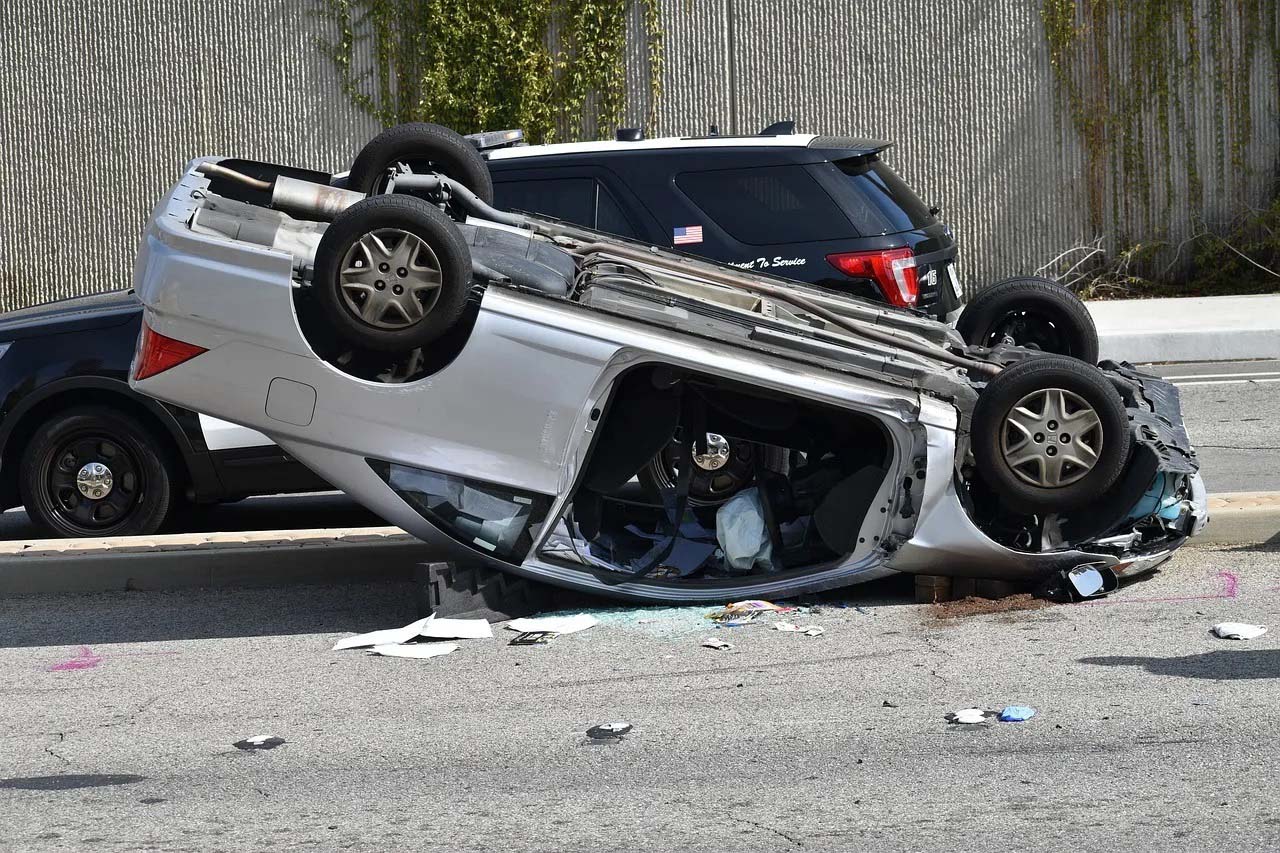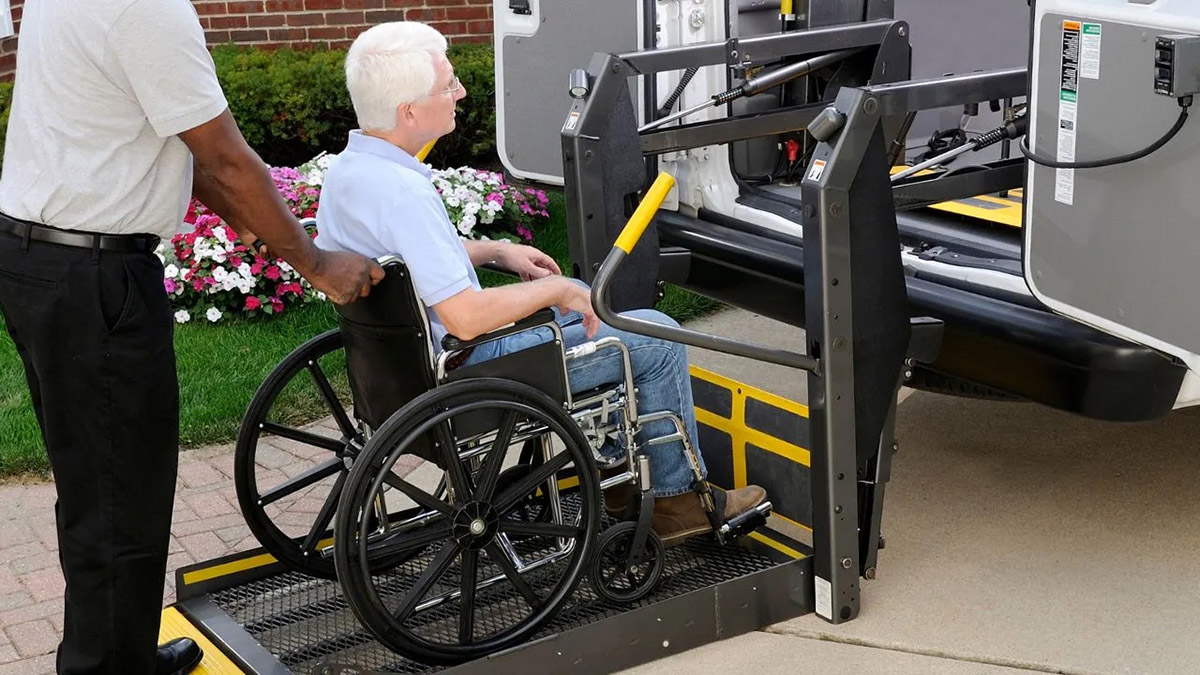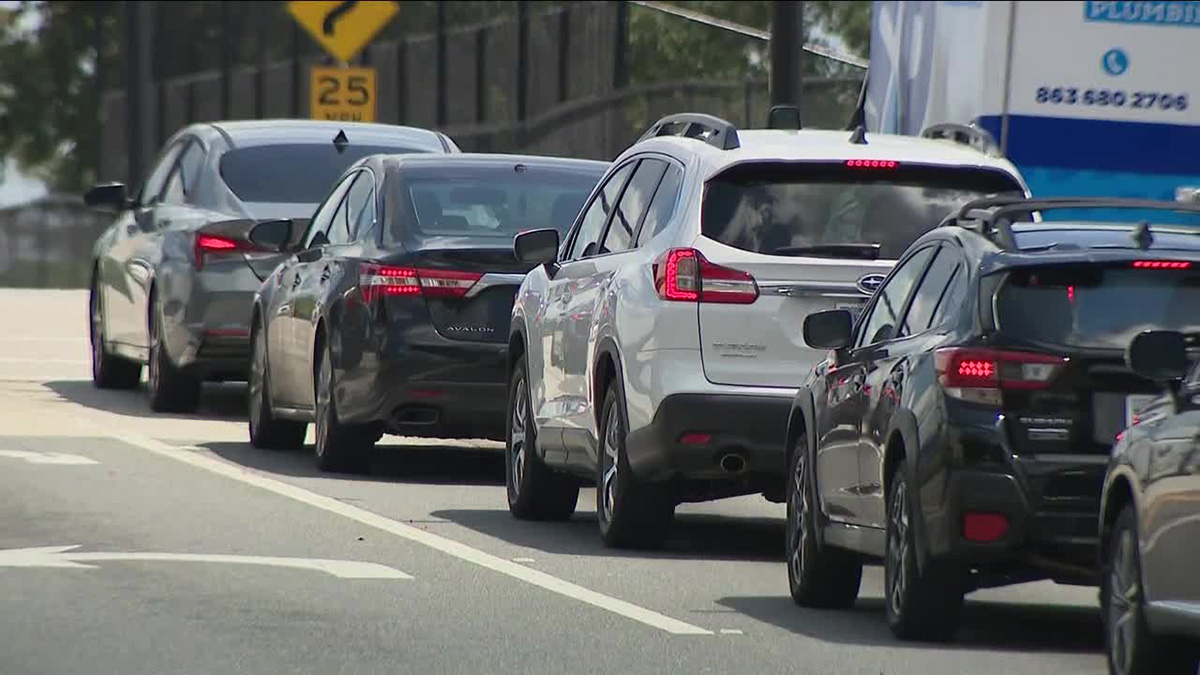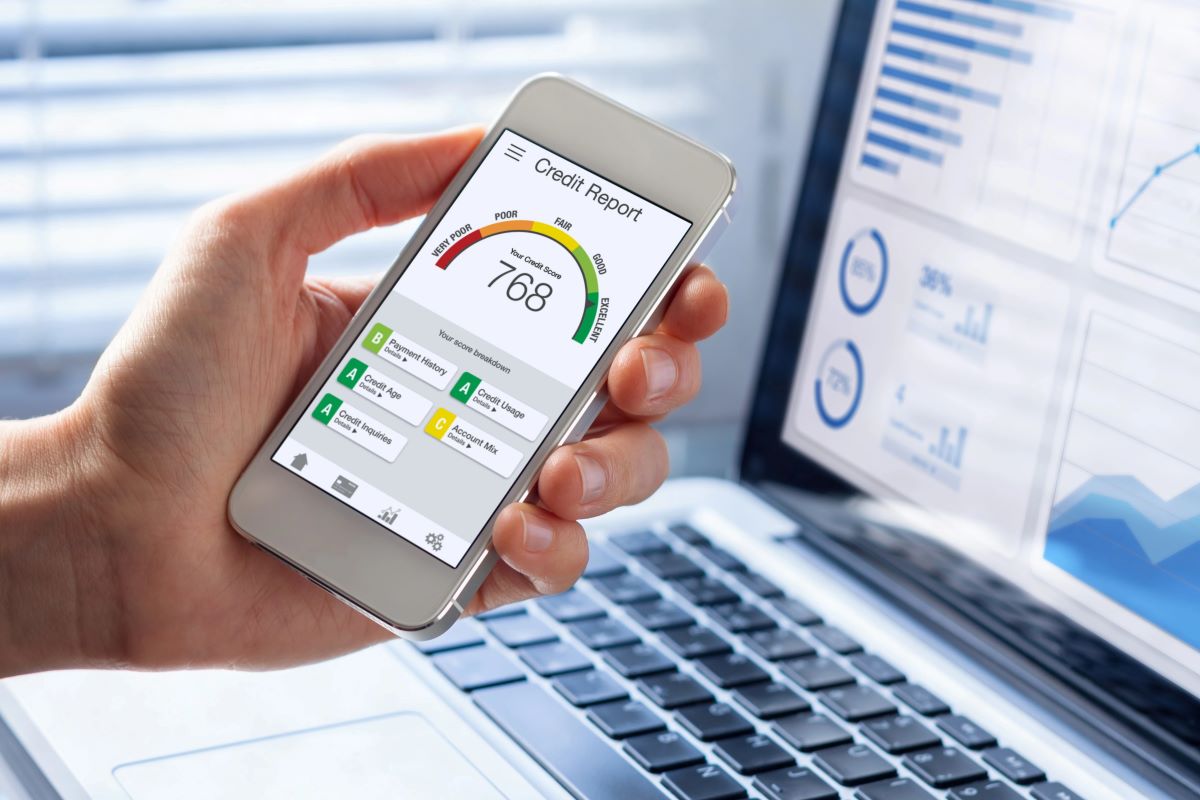

Finance
Why Is Auto Insurance So Expensive In Florida
Published: October 6, 2023
Looking for answers on why auto insurance is expensive in Florida? Explore the financial aspects of this issue and find ways to manage your insurance costs.
(Many of the links in this article redirect to a specific reviewed product. Your purchase of these products through affiliate links helps to generate commission for LiveWell, at no extra cost. Learn more)
Table of Contents
- Introduction
- High Risk Factors in Florida
- No-Fault Insurance System
- Personal Injury Protection (PIP) Coverage
- Uninsured/Underinsured Motorist Coverage
- Mandatory Minimum Coverage Requirements
- Severe Weather and Natural Disaster Risks
- High Population and Congestion
- Fraudulent Activities
- Litigation and Legal Costs
- Higher Cost of Vehicle Repairs
- Analysis of Auto Insurance Rates in Florida
- Ways to Lower Auto Insurance Premiums in Florida
- Conclusion
Introduction
Auto insurance is an essential requirement for every driver, providing financial protection in the event of an accident or damage to your vehicle. However, if you reside in the sunny state of Florida, you may have noticed that auto insurance premiums can be quite high compared to other states. But why is auto insurance so expensive in Florida?
There are several factors that contribute to the high cost of auto insurance in the Sunshine State. From its unique insurance laws and coverage requirements to its susceptibility to natural disasters, Florida presents a set of challenges for insurers. Understanding the reasons behind these high rates can help Florida drivers make informed choices when it comes to their auto insurance coverage.
Throughout this article, we will delve into the various factors that contribute to the high cost of auto insurance in Florida. We will explore the state’s no-fault insurance system, the mandatory coverage requirements, the impact of severe weather and natural disasters, and other factors that make Florida a high-risk state. Additionally, we will offer insights into ways to lower auto insurance premiums and ensure you are getting the best coverage for your needs.
While auto insurance rates can be a burden for Florida residents, it’s important to keep in mind that having proper coverage provides invaluable protection and peace of mind. By understanding the factors at play, you can navigate the complexities of the auto insurance market and make informed decisions to obtain the most cost-effective coverage for your unique circumstances.
So, let’s dive into the various factors that contribute to the high cost of auto insurance in Florida and explore ways to mitigate this financial burden.
High Risk Factors in Florida
Florida’s unique geographical characteristics and demographic factors contribute to the higher risk associated with driving in the state. Here are some of the key factors that make Florida a high-risk state:
- No-Fault Insurance System: Florida operates under a no-fault insurance system, which requires drivers to carry Personal Injury Protection (PIP) coverage. This means that each driver’s own insurance company is responsible for covering their medical expenses and other related costs, regardless of who is at fault in an accident. The no-fault system can result in higher insurance premiums as insurers need to account for the potential payouts under PIP coverage.
- Severe Weather and Natural Disaster Risks: Florida is prone to hurricanes, tropical storms, heavy rainfalls, and flooding. These weather events can lead to a higher frequency of accidents and vehicle damage, driving up the cost of auto insurance. Insurers have to consider the increased risk of claims due to weather-related incidents, resulting in higher premiums for Florida drivers.
- High Population and Congestion: Florida is the third-most populous state in the United States, with millions of residents and a constant influx of tourists. This leads to increased traffic congestion, increasing the likelihood of accidents. High population density and traffic can contribute to higher premiums due to the elevated risk of collisions and higher claim frequency.
- Fraudulent Activities: Florida has unfortunately gained a reputation for insurance fraud. Staged accidents, exaggerated claims, and fraudulent billing are prevalent in the state. The higher incidence of fraudulent activities leads to increased costs for insurance companies, which are then passed on to the policyholders in the form of higher premiums.
- Litigation and Legal Costs: Florida has a higher rate of litigation when it comes to auto insurance claims. The state allows for the pursuit of personal injury lawsuits in auto accidents, and juries in Florida tend to award higher compensation amounts. The increased litigation and higher legal costs for insurance companies result in higher premiums for Florida drivers.
- Higher Cost of Vehicle Repairs: The cost of vehicle repairs and replacement parts can be significantly higher in Florida compared to other states. This can be attributed to a number of factors, including the high demand for repairs due to frequent accidents, higher labor costs, and the corrosive effects of the coastal environment. These increased repair costs are factored into the insurance premiums charged to Florida drivers.
The combination of these high-risk factors contributes to the overall increase in auto insurance rates in Florida. Insurance companies must account for these risks when determining premiums to ensure they can cover the potential costs of claims in the state. However, understanding these factors can assist consumers in making more informed decisions when it comes to their auto insurance coverage.
No-Fault Insurance System
One of the key factors contributing to the high cost of auto insurance in Florida is the state’s no-fault insurance system. Under this system, drivers are required to carry Personal Injury Protection (PIP) coverage as part of their auto insurance policy.
The no-fault insurance system in Florida means that regardless of who is at fault in an accident, each driver’s own insurance company is responsible for covering their medical expenses and related costs up to the limit of their PIP coverage.
This system was implemented to provide faster and more efficient compensation for injury-related expenses, without the need to determine fault and engage in lengthy legal processes. However, the no-fault system can lead to increased insurance premiums for Florida drivers.
With PIP coverage, Florida drivers must carry a minimum of $10,000 in coverage for medical expenses and lost wages resulting from an accident. The purpose of PIP coverage is to provide immediate access to medical treatment and compensation for injuries, regardless of fault. However, the minimum coverage limits may not be sufficient to cover all medical expenses, especially in serious accidents.
Additionally, the no-fault system can lead to cases of fraudulent claims and overutilization of medical services. Some individuals may take advantage of the system and exaggerate their injuries or seek unnecessary medical treatments, driving up the overall cost of insurance for everyone.
Insurance companies must account for the potential payouts under PIP coverage when determining premiums for Florida drivers. The higher the coverage limit, the more insurers may need to charge in premiums to cover the potential costs. This can contribute to the higher cost of auto insurance in Florida compared to other states.
It’s important for Florida drivers to understand the implications of the no-fault insurance system and the required PIP coverage. While it provides immediate access to medical benefits, drivers should consider the adequacy of their coverage limits and explore additional coverage options, such as medical payments coverage or bodily injury liability coverage, to ensure they are adequately protected in case of a severe accident.
Personal Injury Protection (PIP) Coverage
Personal Injury Protection (PIP) coverage is a mandatory component of auto insurance in Florida. It is designed to provide immediate medical and financial support to policyholders who are injured in an auto accident, regardless of who is at fault. PIP coverage helps cover medical expenses, lost wages, and other related costs resulting from an accident.
In Florida, drivers are required to carry a minimum of $10,000 in PIP coverage. This coverage is meant to provide timely access to medical treatment and compensation for injuries sustained in an accident, regardless of fault. However, it’s important to note that the minimum coverage limit might not be sufficient to cover all medical expenses in severe accidents.
PIP coverage extends to the policyholder and any passengers in the insured vehicle at the time of the accident. It also covers injuries sustained by the policyholder as a pedestrian or cyclist involved in an accident with a motor vehicle.
One of the primary advantages of PIP coverage is the ability to receive immediate medical treatment without the need for extensive litigation or determining fault. This allows injured individuals to receive necessary medical care promptly, ensuring a quicker recovery process.
However, the inclusion of PIP coverage in Florida auto insurance policies contributes to the high cost of insurance. Insurers must account for the potential payouts under PIP coverage when determining premiums, as they need to ensure they can cover the medical expenses and related costs of their policyholders in the event of an accident.
Moreover, the prevalence of fraudulent PIP claims in Florida has also contributed to the high cost of insurance. Some individuals may exploit the system by exaggerating their injuries or seeking unnecessary medical treatments to maximize their reimbursement. These fraudulent activities not only drive up insurance costs for all policyholders but also contribute to insurance fraud-related crimes in the state.
To combat the issue of fraudulent claims, the state of Florida has implemented legislation to curb the abuse of PIP coverage. This includes mandatory medical examinations within 14 days of the accident and restrictions on treatment provided by certain healthcare providers.
While PIP coverage is mandatory in Florida, it is essential for drivers to evaluate their coverage limits and consider additional coverage options. Policyholders may choose to increase their PIP coverage limits for more comprehensive protection, or they may opt for additional coverage options, such as medical payments coverage or bodily injury liability coverage, to ensure they are adequately protected in case of a severe accident.
Uninsured/Underinsured Motorist Coverage
Uninsured/Underinsured Motorist (UM/UIM) coverage is an important component of auto insurance in Florida. It provides protection for policyholders in the event of an accident caused by a driver who either has no insurance or lacks sufficient coverage to fully compensate for the damages.
In Florida, just like in many other states, there are unfortunately a significant number of drivers on the roads who are either uninsured or underinsured. This poses a risk to responsible drivers who can potentially suffer financial losses if they are involved in an accident with one of these drivers.
UM coverage comes into play when the at-fault party in an accident is unable to cover the costs of damages, whether due to a lack of insurance or inadequate coverage limits. It helps protect policyholders by providing coverage for medical expenses, property damage, and other losses resulting from the accident.
UM/UIM coverage is not mandatory in Florida, but it is highly recommended. If you are involved in an accident with an uninsured or underinsured driver and do not have this coverage, you may be responsible for covering the costs out of your own pocket, even if you were not at fault.
Adding UM/UIM coverage to your auto insurance policy can provide you with peace of mind and financial protection. It ensures that you are not left with substantial expenses in the event of an accident with an uninsured or underinsured motorist.
When considering UM/UIM coverage, it’s important to review the policy limits and coverage options offered by your insurance provider. The coverage limits should be sufficient to protect you in the case of a severe accident. Higher coverage limits may result in slightly higher premiums, but they offer increased financial protection.
In summary, UM/UIM coverage is a valuable component of auto insurance in Florida. It provides vital protection for policyholders, allowing them to recover their losses in accidents caused by uninsured or underinsured drivers. While not mandatory in Florida, it is highly recommended to ensure that you have comprehensive protection in place.
Mandatory Minimum Coverage Requirements
Florida has specific minimum coverage requirements that all drivers must meet to legally operate a motor vehicle in the state. These requirements ensure that drivers have a basic level of financial protection in the event of an accident.
In Florida, the mandatory minimum coverage requirements include:
- Bodily Injury Liability (BIL): Florida law requires a minimum of $10,000 per person and $20,000 per accident in BIL coverage. This coverage helps pay for medical expenses, pain and suffering, and lost wages for others involved in an accident caused by the insured driver. This coverage is designed to protect the injured party, rather than the insured driver themselves.
- Property Damage Liability (PDL): Florida drivers must carry a minimum of $10,000 in PDL coverage. This coverage pays for damages to another person’s property, such as their vehicle or other structures, resulting from an accident caused by the insured driver.
- Personal Injury Protection (PIP): As mentioned earlier, Florida requires drivers to carry a minimum of $10,000 in PIP coverage. This coverage helps pay for the insured driver’s medical expenses and related costs, regardless of fault in an accident.
These mandatory minimum coverage requirements are put in place to ensure that drivers have some basic level of coverage to protect themselves and others in the event of an accident. However, it’s important to note that these minimum coverage limits may not provide adequate financial protection, particularly in severe accidents where medical expenses and property damages can far exceed the minimum coverage amounts.
Drivers have the option to increase their coverage limits beyond the minimum requirements to provide additional protection. This can help safeguard their financial well-being and ensure they have sufficient coverage in case of a severe accident.
It’s worth noting that while these coverage requirements are mandatory, some drivers may still choose to operate a vehicle without insurance. This is where uninsured/underinsured motorist coverage becomes crucial, as it can provide additional protection for policyholders in the event of an accident with an uninsured or underinsured driver.
When considering auto insurance coverage, it’s important to review your specific needs, evaluate the risks associated with driving in Florida, and ensure that you have adequate coverage to protect yourself and others on the road.
Severe Weather and Natural Disaster Risks
Florida is known for its beautiful weather, but it also comes with its fair share of risks when it comes to severe weather and natural disasters. The state’s geographic location and climate make it particularly susceptible to hurricanes, tropical storms, heavy rainfalls, flooding, and other weather-related events. These risks contribute to the high cost of auto insurance in Florida.
Hurricanes, in particular, pose a significant threat to the state. The Atlantic hurricane season runs from June 1st to November 30th, and Florida is often in the pathway of these powerful storms. The strong winds, heavy rain, and storm surges associated with hurricanes can cause extensive damage to vehicles, leading to increased insurance claims and higher premiums.
Additionally, Florida experiences other weather-related events throughout the year, such as thunderstorms and tropical depressions, which can also result in accidents and damage to vehicles. This increased frequency of weather-related incidents further drives up the cost of auto insurance in the state.
In addition to severe weather, Florida is also prone to other natural disasters, including wildfires and sinkholes. These disasters can lead to property damage and, subsequently, higher insurance costs for policyholders.
Insurance companies must consider the higher risk of accidents and damages associated with severe weather and natural disasters when determining auto insurance premiums in Florida. The potential for increased claims due to weather events necessitates higher premiums to ensure that insurance companies can cover the costs of repairs and settlements.
To mitigate the risks associated with severe weather and natural disasters, it is important for Florida drivers to take proactive measures. This includes securing vehicles during storms, following evacuation orders, and staying informed about weather conditions. Additionally, maintaining comprehensive auto insurance coverage with adequate limits and understanding your policy’s coverage for weather-related incidents is crucial.
While it may be challenging to completely avoid the impact of severe weather and natural disasters in Florida, being prepared and having appropriate insurance coverage can help mitigate the financial burden and protect you on the road.
High Population and Congestion
Florida is the third-most populous state in the United States, with millions of residents and a constant influx of tourists. The state’s popularity as a tourist destination, retirement haven, and business hub contributes to its high population density. However, this high population also leads to increased traffic congestion and higher risks on the road.
High population density and congestion not only result in longer commutes and frustration for drivers but also increase the likelihood of accidents. More vehicles on the road mean more opportunities for collisions and traffic incidents.
The increased risk of accidents and the higher frequency of claims associated with congested areas contribute to the higher cost of auto insurance in Florida. Insurance companies have to account for the elevated risk of accidents in densely populated areas when determining premiums for drivers.
In congested areas, even minor fender benders can result in significant damage and increased repair costs. These factors drive up the overall cost of insurance as insurers must anticipate and cover the potential expenses associated with accidents in densely populated areas.
Moreover, traffic congestion can lead to more aggressive driving behaviors, such as tailgating, reckless driving, and speeding, which further increase the chances of accidents. Insurance companies take into account the increased risk of accidents and subsequent claims when calculating premiums for Florida drivers.
To mitigate the impact of high population and congestion on auto insurance costs, Florida drivers can consider adopting defensive driving techniques and following traffic laws. Being aware of the surrounding traffic conditions and practicing patience can help reduce the likelihood of accidents and subsequent insurance claims.
Furthermore, exploring alternative transportation options, such as carpooling, public transportation, or cycling, can help alleviate traffic congestion and potentially reduce the risk of accidents. Some insurance companies may even offer discounts for drivers who use alternative transportation methods or participate in driver safety courses.
While the high population and congestion in Florida present challenges on the road, being mindful of these factors and taking proactive steps can contribute to safer driving and potentially lower auto insurance premiums.
Fraudulent Activities
Florida unfortunately has gained a reputation for insurance fraud, which not only affects the insurance industry but also contributes to the high cost of auto insurance in the state. Fraudulent activities related to auto insurance can take various forms, including staged accidents, exaggerated claims, and fraudulent billing practices.
Staged accidents are one of the most common types of insurance fraud in Florida. Criminals intentionally cause accidents or manipulate the circumstances to make it appear as though an accident occurred. They then file fraudulent insurance claims, seeking compensation for damages and injuries that never actually happened. These staged accidents drive up insurance costs as insurers are forced to pay out on illegitimate claims.
In addition to staged accidents, some individuals may exaggerate their injuries or the extent of vehicle damage to maximize their insurance claims. They may go as far as seeking unnecessary medical treatments or submitting inflated repair estimates. These dishonest actions place an increased burden on insurance companies, resulting in higher payouts and ultimately higher premiums for policyholders.
Fraudulent billing practices also contribute to inflated insurance costs. Some healthcare providers, repair shops, and other service providers may engage in billing schemes, submitting false or inflated invoices to insurance companies. This drives up the overall expenses associated with insurance claims and impacts the premiums paid by Florida drivers.
Insurance companies invest significant resources in detecting and combating insurance fraud, but it remains a challenge. To address this issue, Florida has implemented measures to identify and penalize individuals involved in fraudulent activities. This includes the establishment of specialized investigative units and collaboration between law enforcement agencies and insurance companies.
As a responsible driver, it’s important to be aware of insurance fraud and take steps to protect yourself. This includes maintaining accurate records of accidents and injuries, seeking medical treatment from reputable providers, and reporting any suspicious activities to your insurance company. By being vigilant, you can help prevent insurance fraud and potentially contribute to lower auto insurance costs in the long run.
Insurance fraud not only impacts the insurance industry but also affects honest policyholders. By taking a proactive approach, working together to combat fraudulent activities, and supporting measures to deter fraud, we can help reduce insurance costs and create a more transparent and fair insurance market in Florida.
Litigation and Legal Costs
Florida has a higher rate of litigation when it comes to auto insurance claims, which significantly contributes to the high cost of auto insurance in the state. The legal landscape in Florida allows for the pursuit of personal injury lawsuits in auto accidents, and juries in the state have been known to award higher compensation amounts.
When an accident occurs, injured parties have the option to file a personal injury lawsuit against the at-fault driver or the insurance company. This can result in prolonged legal battles, increased legal costs, and higher settlements or jury verdicts. The cost of defending against these lawsuits and the potential for substantial payouts by insurance companies are factored into the overall cost of auto insurance.
Additionally, Florida operates under a comparative negligence system, which means that multiple parties can be held partially responsible for an accident. This increases the complexity of cases and can result in contentious legal disputes, further driving up legal costs and insurance premiums.
The high rate of litigation and the potential for larger settlements or jury awards in Florida increase the financial risk for insurance companies. To protect their interests and maintain profitability, insurers must account for these potential costs when determining premiums, resulting in higher rates for Florida drivers.
Efforts have been made to reform Florida’s legal system to help control escalating legal costs and reduce the strain on the insurance industry. These reforms aim to curtail fraudulent claims, streamline legal proceedings, and provide more clarity in determining liability and damages. However, the impact of these reforms on reducing insurance costs has been a subject of debate.
As a driver in Florida, it’s essential to understand the implications of the state’s legal landscape on auto insurance costs. Maintaining safe driving habits, having proper insurance coverage, and seeking legal advice when necessary can help protect you from costly legal battles and mitigate the impact of litigation on your insurance premiums.
Understanding your rights and responsibilities as a driver and policyholder, and being aware of the legal framework that governs auto insurance claims, can help you navigate the complexities of the legal system and make informed decisions.
By staying informed and advocating for fair and reasonable legal practices, we can work towards a more balanced and affordable auto insurance market in Florida.
Higher Cost of Vehicle Repairs
In Florida, the cost of vehicle repairs tends to be higher compared to other states, which contributes to the overall high cost of auto insurance. Several factors contribute to the increased expenses associated with repairing vehicles in the state.
Firstly, the high demand for repairs due to the frequency of accidents in Florida plays a significant role. With a higher population density and congested roads, the likelihood of accidents and subsequent vehicle damage is elevated. This increased demand for repairs puts pressure on auto repair shops, leading to higher costs for labor and parts.
The coastal location of many cities in Florida also impacts the cost of vehicle repairs. The corrosive effects of saltwater and high humidity can lead to accelerated wear and tear on vehicles, resulting in more frequent repairs and replacements. Additionally, the availability of specialized parts and expertise required to repair vehicles in coastal areas may be limited, leading to higher costs for sourcing and completing repairs.
Another factor contributing to higher repair costs is the advanced technology and features in modern vehicles. With sophisticated electronics, sensors, and computer systems, repairing vehicles today requires specialized knowledge and equipment. This can drive up repair costs as technicians need to undergo continuous training and invest in expensive diagnostic tools.
Insurance companies take these factors into consideration when determining auto insurance premiums. To cover the potential expenses associated with higher repair costs, insurers may adjust their rates accordingly, resulting in higher premiums for policyholders in Florida.
While the higher cost of vehicle repairs can have a direct impact on auto insurance rates, there are steps drivers can take to help mitigate these expenses:
- Maintain a safe driving record: Safe driving habits can help prevent accidents and reduce the need for vehicle repairs.
- Regular vehicle maintenance: Keeping up with routine maintenance and addressing minor issues promptly can prevent larger and costlier repairs down the line.
- Shop around for repair services: Obtaining multiple estimates and comparing prices from reputable repair shops can help ensure you receive competitive rates for repairs.
- Consider comprehensive coverage: Adding comprehensive coverage to your auto insurance policy can help cover the costs of repairs due to non-accident-related incidents, such as theft, vandalism, or natural disasters.
By taking proactive steps, being diligent in vehicle maintenance, and exploring insurance options, Florida drivers can better manage the higher cost of vehicle repairs and potentially lower their overall auto insurance expenses.
Analysis of Auto Insurance Rates in Florida
When it comes to auto insurance rates, Florida consistently ranks among the highest in the nation. The factors contributing to the high insurance rates in the state are multifaceted, ranging from legal and regulatory considerations to demographic and geographical factors.
One key element is the high number of drivers on the road in Florida. With a large population and constant influx of tourists, the roads are busier, increasing the likelihood of accidents and subsequent insurance claims. The higher risk of accidents drives up the cost of insurance premiums, as insurers must account for the potential expenses.
The state’s unique insurance laws also play a significant role. Florida operates under a no-fault insurance system, requiring drivers to carry Personal Injury Protection (PIP) coverage. The inclusion of PIP coverage in auto insurance policies adds additional costs to insurance premiums. Furthermore, the frequency of fraudulent claims and staged accidents places a financial burden on insurance companies, which ultimately gets passed on to policyholders in the form of higher rates.
Natural disasters and severe weather events are another factor influencing auto insurance rates in Florida. The state is prone to hurricanes, tropical storms, heavy rainfalls, and flooding. These weather-related incidents increase the frequency of accidents and vehicle damage, leading insurers to charge higher premiums to cover the potential costs associated with these risks.
Florida’s litigious environment is also a contributor to the high insurance rates. The state allows for the pursuit of personal injury lawsuits in auto accidents, and juries in Florida often award higher compensation amounts. This drives up legal costs and potential settlements, resulting in higher premiums for drivers.
Additionally, the higher cost of vehicle repairs in the state adds to the overall expense of auto insurance. Florida’s population density, coastal location, and advanced vehicle technology all contribute to the increased cost of repair services, which insurers factor into their premium calculations.
An analysis of auto insurance rates in Florida reveals an intersection of various factors that contribute to the overall higher costs. Insurance companies must consider the state’s unique characteristics and risks, legal environment, frequency of accidents, and potential for severe weather events when determining premiums.
To alleviate the burden of high insurance rates in Florida, drivers should consider the following tips:
- Shop around and compare quotes from multiple insurance providers to ensure competitive rates.
- Consider increasing deductibles or adjusting coverage limits to find a balance between cost and sufficient protection.
- Take advantage of available discounts, such as those for safe driving records or completion of defensive driving courses.
- Explore bundling options with other insurance policies, such as home or renter’s insurance, for potential multi-policy discounts.
- Regularly review and update your coverage to ensure it aligns with your current needs and circumstances.
While auto insurance rates may be higher in Florida, being proactive in seeking cost-effective options and understanding the contributing factors can help drivers navigate the insurance market and find coverage that provides necessary protection at reasonable rates.
Ways to Lower Auto Insurance Premiums in Florida
Despite the higher insurance rates in Florida, there are several strategies that drivers can employ to lower their auto insurance premiums. Taking proactive steps to minimize risk and demonstrate responsible behavior can help save money on insurance costs. Here are some effective ways to lower auto insurance premiums in Florida:
- Shop around for insurance: Don’t settle for the first insurance quote you receive. Take the time to compare rates from multiple insurance providers to find the most competitive price for your coverage needs.
- Drive defensively: Maintaining a clean driving record and avoiding accidents and traffic violations can qualify you for safe driver discounts, which can lead to lower premiums.
- Consider higher deductibles: Increasing your deductible—the amount you pay out of pocket in the event of a claim—can lower your premium. However, ensure that you have sufficient savings to cover the higher deductible if necessary.
- Utilize discounts: Ask your insurance provider about available discounts. These can include discounts for safe driving, bundling auto and home insurance policies, having anti-theft devices installed in your vehicle, or completing defensive driving courses.
- Maintain good credit: Many insurance companies use credit scores as a factor in determining premiums. Maintaining a good credit history can help secure lower insurance rates.
- Consider usage-based or telematics programs: Some insurance companies offer usage-based or telematics programs that monitor your driving habits. If you are a safe driver, you may be eligible for discounts based on your actual driving behavior.
- Review your coverage limits: Periodically review your coverage limits to ensure they align with your needs. If you have an older car, for example, you may want to consider dropping comprehensive or collision coverage, which can significantly reduce your premium.
- Take advantage of auto club memberships: Being a member of certain auto clubs or affiliations can provide access to exclusive insurance discounts.
- Inquire about group or affinity discounts: Check if you are eligible for any group or affinity discounts through your employer, alumni association, or professional organizations.
- Install safety features in your vehicle: Equip your car with safety features such as anti-lock brakes, airbags, and an anti-theft system. These features not only reduce the risk of accidents and theft but can also qualify you for insurance discounts.
It’s important to note that while lowering insurance premiums can save you money, it’s essential to maintain adequate coverage to protect yourself against financial burdens in the event of an accident. Balancing cost-saving strategies with comprehensive coverage is crucial for peace of mind on the road.
By implementing these strategies, drivers in Florida can take proactive steps to lower their auto insurance premiums without compromising on essential coverage. Remember to review your insurance policy regularly and stay updated on potential discounts or changes in the insurance market that may impact your premiums.
Conclusion
Auto insurance premiums in Florida can be higher compared to other states due to a variety of factors. Understanding these factors and knowing how to navigate the insurance market can help Florida residents make informed decisions and find ways to mitigate the financial burden.
From the unique no-fault insurance system to the impact of severe weather and natural disasters, the high population and congestion, fraudulent activities, litigation and legal costs, and the higher cost of vehicle repairs, all these factors contribute to the higher auto insurance rates in Florida.
However, there are actionable steps that can be taken to lower auto insurance premiums. Shopping around, maintaining a clean driving record, considering higher deductibles, utilizing available discounts, and reviewing coverage limits are effective ways to reduce insurance costs. It is also important to explore usage-based programs, maintain good credit, and leverage auto club memberships or group affiliations to take advantage of possible discounts.
As a responsible driver, it is crucial to stay informed about insurance laws, regulations, and the evolving insurance market in Florida. Regularly reviewing insurance policies, evaluating individual coverage needs, and reassessing options can lead to savings without compromising necessary protection.
While the cost of auto insurance in Florida may be higher, having proper coverage remains essential. Auto insurance provides financial protection in the event of accidents, property damage, or injuries. By understanding the contributing factors, being proactive, and making informed choices, drivers can find the most cost-effective coverage that meets their needs.
Ultimately, in a state prone to severe weather, with a high population, and a complex legal landscape, drivers in Florida must prioritize safety, responsible driving, and maintaining adequate insurance coverage. By doing so, they can navigate the challenges and better protect themselves and their vehicles on the roads of the Sunshine State.














